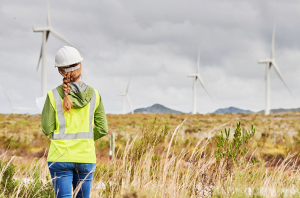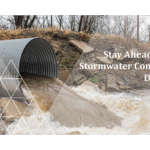
Phase 2 Environmental Site Assessment (ESA) plays a crucial role in understanding the potential environmental risks associated with a property. This assessment goes beyond the initial Phase 1 ESA, which aims to identify potential sources of contamination or environmental concerns. While the Phase 1 assessment provides a broad overview, the Phase 2 ESA involves a more detailed investigation to evaluate the extent and severity of any identified issues.
Understanding the Purpose of Phase 2 Environmental Site Assessment
Phase 2 ESA serves several purposes in environmental studies. It helps to confirm the presence or absence of contaminants in soil, groundwater, or other mediums on a property. By collecting and analyzing samples, researchers can determine the concentration and distribution of hazardous substances, if any, and assess the potential impact on the environment and human health. Such information is essential for developing appropriate strategies for remediation, if necessary.
Importance of Phase 2 Assessment in Environmental Studies
The data gathered through the Phase 2 ESA is vital for understanding the potential risks associated with a property. This information not only guides the decision-making process for developers and property owners but also helps regulators enforce environmental policies. It allows stakeholders to make informed choices regarding property acquisition, development, and redevelopment, minimizing potential liabilities and ensuring compliance with environmental regulations.
Key Components of a Phase 2 Environmental Site Assessment
A thorough Phase 2 ESA typically consists of multiple components. Site investigation involves a detailed examination of the property, including a visual inspection and historical review of the site. Sampling, both soil and groundwater, is carried out to evaluate the presence and concentration of hazardous substances. Data analysis and report preparation complete the assessment, providing a comprehensive summary of the findings and recommendations for further actions, if necessary.
One crucial aspect of the Phase 2 ESA is the visual inspection. During this process, environmental professionals meticulously examine the property, looking for any signs of contamination or potential sources of pollutants. They assess the condition of buildings, infrastructure, and surrounding areas to identify any areas of concern. This thorough examination helps to paint a comprehensive picture of the site’s environmental health and potential risks.
In addition to the visual inspection, the historical review of the site plays a significant role in the Phase 2 ESA. Researchers delve into the property’s past, gathering information from various sources such as historical records, aerial photographs, and interviews with previous owners or occupants. This historical context provides valuable insights into the site’s previous uses, potential sources of contamination, and any previous remediation efforts that may have taken place. Understanding the site’s history is crucial in assessing the potential presence and distribution of hazardous substances.
The Process of Phase 2 Environmental Site Assessment in Tulsa
Conducting a Phase 2 ESA in Tulsa follows a specific process that consists of several stages. Understanding these stages is vital for ensuring a thorough and accurate assessment.
Initial Steps in the Assessment Process
The initial steps of a Phase 2 ESA in Tulsa involve gathering information about the property and its history. This includes reviewing available records, such as previous assessments, permits, and any known spills or releases. The site is visually inspected to identify potential sources of contamination or areas of concern.
Detailed Investigation and Sampling
Once the initial steps are completed, a detailed investigation begins. This involves collecting samples from various mediums, including soil, groundwater, and surface water if applicable. The samples are carefully analyzed in a laboratory using state-of-the-art techniques to determine the presence and concentration of contaminants. The investigation also includes identifying potential migration pathways and assessing the potential impact on surrounding areas.
Data Analysis and Report Preparation
After collecting and analyzing all relevant data, the findings are compiled into a comprehensive report. This report summarizes the results of the Phase 2 ESA, including a detailed discussion of the potential risks and recommendations for further action, if necessary. The report is prepared in accordance with industry standards and regulatory requirements to ensure accuracy and compliance.
Regulatory Framework for Environmental Site Assessment in Tulsa
Environmental site assessments in Tulsa are conducted within a regulatory framework that encompasses federal, state, and local laws and regulations.
Federal and State Environmental Regulations
The Phase 2 ESA process in Tulsa adheres to federal and state environmental regulations to ensure compliance. These regulations outline specific requirements for the assessment process, the type and extent of sampling, and the permissible levels of contaminants. They help protect public health and the environment by providing a standardized approach to environmental assessments across different sites.
Compliance with Tulsa’s Local Environmental Laws
In addition to federal and state regulations, environmental assessments in Tulsa must comply with local environmental laws. These may include specific requirements related to land use, zoning, or hazardous materials management. Compliance with these local laws and regulations helps ensure that the assessment is conducted in accordance with Tulsa’s unique environmental landscape and priorities.
Potential Challenges in Conducting Phase 2 Environmental Site Assessment
Conducting a Phase 2 ESA can present various challenges that need to be overcome to ensure a successful and accurate assessment.
Dealing with Contaminated Sites
One of the primary challenges is dealing with potentially contaminated sites. These sites often require extensive remediation efforts to mitigate risks and ensure the safety of nearby communities and the environment. Careful planning and implementation of appropriate remediation measures are essential to address contamination effectively.
Overcoming Geographical and Logistical Hurdles
The geographical and logistical aspects of a site can also pose challenges during the Phase 2 ESA. Sites located in remote areas or with difficult access require careful planning to ensure efficient sample collection and analysis. Proper coordination and use of specialized equipment can help overcome these challenges and ensure accurate results.
The Role of Environmental Consultants in Phase 2 Assessment
Environmental consultants play a critical role in conducting Phase 2 ESA and ensuring a comprehensive and accurate assessment process.
Selecting the Right Environmental Consultant
Choosing the right environmental consultant is crucial to the success of the Phase 2 ESA. A reputable consultant should have extensive experience in conducting environmental assessments, a deep understanding of regulatory requirements, and access to advanced technologies and techniques for sample collection and analysis.
How Consultants Facilitate the Assessment Process
Environmental consultants facilitate the assessment process by providing expertise at every stage. They guide clients through the regulatory framework, ensuring compliance and minimizing potential liabilities. Consultants also coordinate and execute the necessary fieldwork, including sampling and analysis, and work closely with clients to develop effective remediation strategies based on the assessment findings.
In conclusion, conducting a Phase 2 Environmental Site Assessment in Tulsa is vital to identify and understand potential risks associated with a property. This assessment provides valuable information that guides decision-making, ensures compliance with regulations, and protects human health and the environment. By following a systematic process and utilizing the expertise of environmental consultants, property owners and developers can make informed choices and take appropriate actions to address any identified environmental challenges.
Ready to ensure your Tulsa property is environmentally sound and compliant with all regulations? Look no further than ESE Partners. Our team of skilled environmental engineers and scientists are experts in Phase 2 Environmental Site Assessments, offering comprehensive services to identify and manage any environmental risks your property may face. With our extensive experience in environmental due diligence, remediation, and compliance, we are committed to responsibly moving your business forward. Don’t let environmental concerns slow down your progress. Request A Proposal today and partner with ESE Partners for a thorough and reliable assessment that will pave the way for your property’s success.








